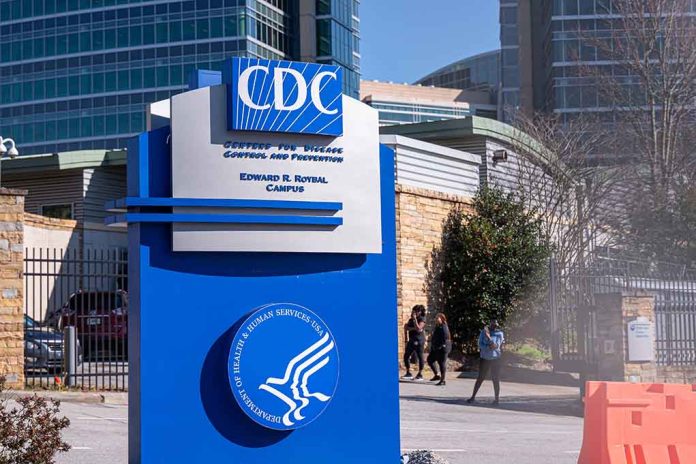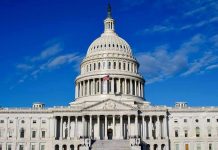
CDC reveals Valley Fever infections are up to 18 times higher than officially reported, with an estimated 273,000 cases and 900 deaths in 2019 alone, as government health surveillance systems continue to fail Americans.
Key Takeaways
- The true burden of Valley Fever may be 10-18 times higher than officially reported, with approximately 273,000 symptomatic cases in 2019
- An estimated 23,000 hospitalizations and 900 deaths occurred due to Valley Fever, primarily affecting Arizona and California.
- Underreporting stems from inadequate diagnostic practices, with the disease only being reportable in 28 states despite its growing geographical spread.
- Government health agencies have failed to implement proper surveillance and reporting mechanisms, leaving Americans vulnerable to this respiratory infection.
- Environmental factors like drought and wildfires may be expanding the disease’s reach beyond traditional endemic regions.
Massive Underreporting Exposes Government Health Surveillance Failures
In yet another example of government health agencies falling short, a new CDC study reveals that Valley Fever cases are drastically underreported across America. The recently published data from the National Notifiable Diseases Surveillance System shows the true scale of this respiratory infection is far worse than citizens have been told. According to the June 3, 2025 report, approximately 273,000 Americans suffered symptomatic Valley Fever infections in 2019, with 900 deaths resulting from the disease. This represents 10 to 18 times more cases than were officially documented, raising serious questions about the competence of our public health reporting systems.
“Some of the main factors contributing to underreporting include underdiagnosis or misdiagnosis of coccidioidomycosis as bacterial or viral community-acquired pneumonia, coccidioidomycosis being reportable only in 28 states and Washington DC, and people who may not seek care for coccidioidomycosis even if they have symptoms,” said Mitsuru Toda, PhD.
High-Risk States Bearing the Brunt While Washington Ignores the Crisis
Southwestern states, particularly Arizona and California, have been hit hardest by this fungal respiratory disease, with an estimated 125,000 cases in these high-endemic regions alone. The national incidence rate was calculated at 83 cases per 100,000 people, but in these high-endemic states, the rate soared to 267 per 100,000 – more than three times the national average. Despite this concentration of cases, the federal government has failed to implement adequate reporting requirements, with Valley Fever only being a reportable condition in 28 states and Washington DC, leaving vast areas of the country with no monitoring whatsoever.
“Currently, only 28 states and Washington DC report coccidioidomycosis. Increasing the number of states that report coccidioidomycosis could help enhance our understanding of coccidioidomycosis epidemiology and the spread of Coccidioides species over time, especially in places where coccidioidomycosis is more common,” said Mitsuru Toda, PhD.
Environmental Factors Expanding Disease Reach While Bureaucrats Dither
Environmental changes, potentially linked to drought conditions and wildfires, may be expanding the geographical reach of Coccidioides fungal spores beyond their traditional endemic regions. Recent surges in California cases in early 2025 highlight this growing threat. Meanwhile, the CDC continues to rely on outdated surveillance methods and incomplete data collection, leaving American citizens vulnerable to a disease that caused an estimated 23,000 hospitalizations in 2019 alone. The bureaucratic failure to properly track this disease has direct consequences for patient outcomes, as misdiagnosis leads to delayed treatment and potentially preventable deaths.
“It is important for clinicians to test for coccidioidomycosis in patients with pneumonia who are not getting better on antibiotics regardless of where they live,” said Mitsuru Toda, PhD.
Americans Left to Fend for Themselves as Healthcare System Fails
The study, led by Samantha L. Williams, MPH, from the CDC and published in JAMA Network Open, highlights how Americans are being left to navigate this health threat with minimal government support. Patients with pneumonia-like symptoms who don’t respond to antibiotics are frequently misdiagnosed, with Valley Fever often not even considered as a possibility. The bureaucratic failure extends to medical education and clinical practice, with many healthcare providers lacking awareness about this potentially deadly disease. This systemic failure means citizens must advocate for their testing and treatment, rather than relying on a broken public health infrastructure.
“Increased awareness nationwide is needed among clinicians and the general public, as patients with knowledge of coccidioidomycosis may be more likely to be diagnosed earlier than those unfamiliar with the disease,” according to the authors.
President Trump’s Administration Confronts Legacy of Health System Failures
As President Trump’s administration continues working to reform America’s broken healthcare system, these findings represent yet another example of the deep-rooted problems plaguing our public health infrastructure. The massive underreporting of Valley Fever cases exposes fundamental flaws in how diseases are tracked and monitored across the country. With only limited funding directed toward this growing threat, and bureaucratic inertia preventing expansion of reporting requirements to all 50 states, citizens in newly affected regions may remain unaware of their risk until it’s too late. True healthcare reform must address these surveillance failures to protect Americans from preventable suffering and death.













